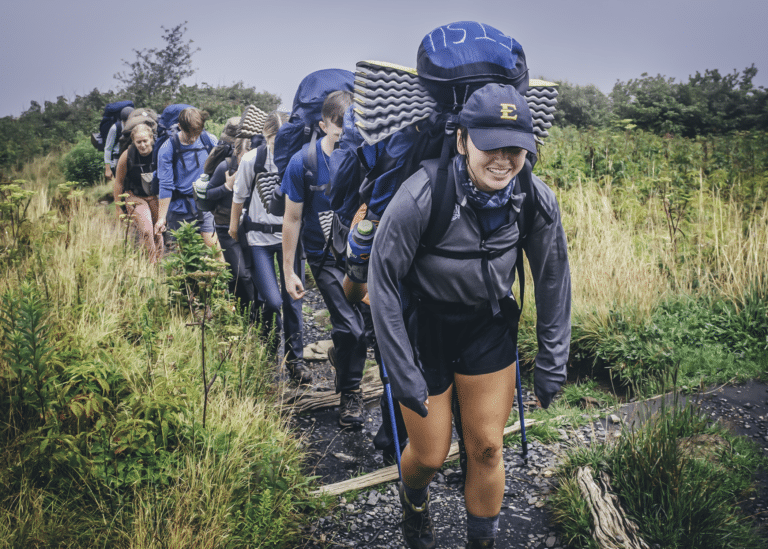by Graham Averill
Everest has its oxygen tanks, El Capitan has its bolts, and the Appalachian Trail has its feces. Forget cell phone towers, road construction, and development: one of the most serious manmade problems the A.T. faces is human waste.
“It’s a pretty big problem, particularly in high use areas like the Smokies,” says Morgan Sommerville, the regional director of the Appalachian Trail Conservancy. “We currently have privies and composting bins at shelters, but they fill up so quickly that we have to make them bigger and bigger. It’s gotten to the point where we have to haul in mulch for the composting sites by helicopter. That’s not cheap. And we use volunteers to maintain these bins and privies. It’s not a pleasant task.”
It comes down to numbers. A whopping four million hikers set foot on some part of the famous footpath each year (including 2,500 attempting a thru-hike). And every single one of them has to go to the bathroom. Unfortunately, very few of them follow the recommended Leave No Trace guidelines for pooping in the woods, which is to dig a shallow cathole and bury the deed. Instead, most hikers opt for the overused and expensive-to-maintain privies, which can no longer handle the heavy traffic.
“There’s a significant amount of exposed human feces at some overnight sites,” Sommerville says. “The frustrating thing is that it’s a user created problem. But you can’t exactly give someone a ticket for going to the bathroom wrong.”
What’s even more frustrating for the ATC and the volunteer groups that maintain the trail is that there’s a simple solution to the issue: the cathole. According to Leave No Trace guidelines, whenever nature calls, hikers should find a nice quiet spot at least 20 yards from any trail, road, stream, or campsite. Dig a hole about six inches deep with a trowel, do your business, then cover the hole back up with dirt. The toilet paper, you ask? Carry it out in a zip-lock bag.
It’s a simple solution, but that doesn’t mean people will do it. “Burying your own waste is a simple and effective way to contribute to the A.T.” Sommerville says. “But people are lazy. Even thru-hikers. It’s no excuse, though. Everyone has to think about how their hike affects other people along the trail.”







